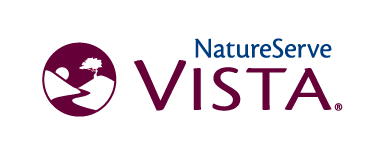Uses

- Overlay data and investigate patterns and concepts such as richness and diversity, rarity, viability, and data confidence.
- Characterize the current landscape/seascape by importing and integrating data for land/sea use, development, conservation, resource management, and any mapped stressor such as fire or invasive species. Define future scenarios by importing plans and proposals, modeled trends such as urbanization and agriculture conversion, and forecasts such as climate change effects.
- Evaluate scenarios through cumulative effects assessment to understand where resources and values (conservation elements) will be sustained or in conflict with any scenario feature. Generate a large variety of maps and quantitative reports to inform impact assessments, mitigation, and planning.
- Represent multiple objectives by integrating other desired features for development, land use, resource use and recreation, and cultural values such as historic sites and scenic views.
- Investigate conflicts and create site-level mitigation plans or entirely new plan alternatives.
- Use the Marxan optimization software wizard in Vista to generate efficient conservation priority maps and use Vista to design implementable plans.
- Use Vista as a development review and mitigation tool to select sites, propose actions, and get instant reports on impacts and benefits.
- Conduct ongoing plan implementation, monitoring, updates, and evaluations to generate plan updates and reports.
Technical Features
 Works with several other useful software tools (such as Marxan, InVEST, Community Viz, Random Forests, and OpenNSPECT) to incorporate land use, ecosystem services, and ecological and geophysical modeling into planning.
Works with several other useful software tools (such as Marxan, InVEST, Community Viz, Random Forests, and OpenNSPECT) to incorporate land use, ecosystem services, and ecological and geophysical modeling into planning.- Extensive documentation and reporting features. Vista generates FGDC-compliant metadata for its outputs, provides users with extensive ability to add comments and document data inputs and analytical settings, and generates numerous customizable reports.
- Compatible with the latest ArcGIS and Marxan releases. Additional software requirements: GIS: ESRI ArcGIS with Spatial Analyst; Other: OS requirements: Microsoft Windows, Access, and .Net 4; 8GB of RAM recommended.
- Suitable for GIS experts as well as planners and managers with basic GIS experience with a minimum of training and support.
- NatureServe offers technical support, modular and customizable training online or onsite, and all levels of technical assistance to ensure your success.
- Data and information requirements are flexible but include spatial distribution for conservation elements (any resource of conservation interest—biodiversity, cultural, etc.) and scenario features and knowledge of compatibility between elements and scenario features.
- Key outputs include a rich set of maps (ArcGIS grids), reports, and tabular outputs that can be exported to HTML and MS Excel formats.
For more technical information, contact us at vista_support@natureserve.org